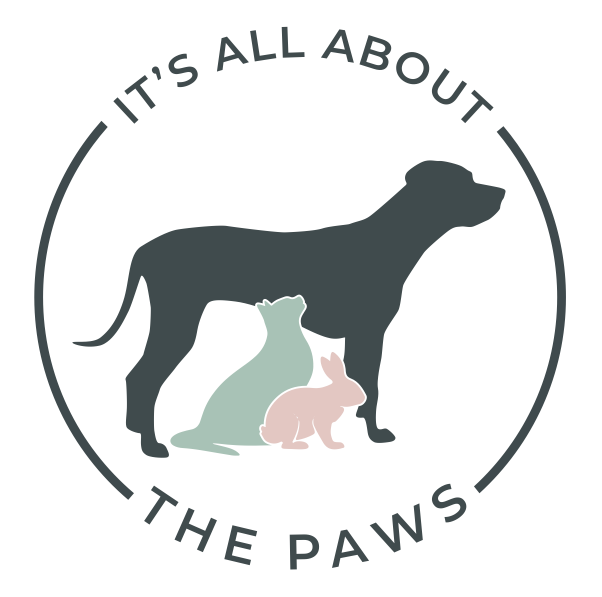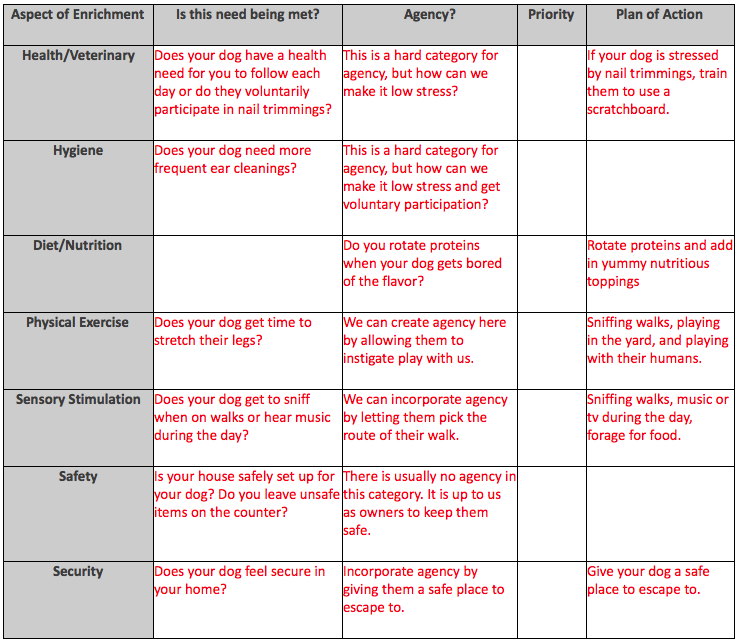Enrichment Series Part Two: Enrichment vs. Behavior
Last week we gave a high-level overview of what enrichment actually means and what it truly is. If you missed this blog, click here to go back and read! There is so much information that goes into enrichment that our blog can't possibly dive into it all, but this week we are going to dive a little deeper and discuss how enrichment can tie into your dog's behavior.
What is even more exciting to us about enrichment, if you find which type of enrichment your animal thrives with it can help curb or rid unwanted behavior. An enriched dog is a good dog. I'll say that again for good measure - an enriched dog is a good dog. However, it is essential to note that enrichment is not a one-stop-shop for behavioral issues. Still, if you have not implemented enrichment into your animals' day, I would suggest adding it! You might just see a significant change for the better! The easiest way for me to explain enrichment helping behavior is to picture a human toddler. If your child is bored and hasn't had the chance to play, they will likely annoy you all day and will probably start occupying themselves with something around the house that is less desirable or even become irritable. This is true for your dog. We have to allow them an outlet to express their instinctual behaviors so they can live a positive and happy life.
One of the easiest ways to stay on track and make enrichment simple for us, too, is to create an enrichment schedule. While enrichment is rewarding for our animals, we also want it to be rewarding for us as humans. If it becomes too much of a task or too hard, we are likely to fall off the bandwagon. For example, after a long day at work, a long decompression walk through a forest preserve might not sound appealing, but what would be great is a frozen Kong or Licki Mat. This is something that you might already have in your freezer ready to go and requires little to no effort. Make this easy on yourself - don't think into it too much! On Sunday nights while relaxing and watching T.V., you can prep frozen snacks for the week. It's a win-win! T.V. time and a week's worth of enrichment ready for our dogs! But enrichment also does not need to revolve around food and walks either - the sky can be the limit here. At the end of the day, all that matters is that we are meeting the needs of our animals; it does not matter how they are being met, as long as activities make our dogs feel safe, secure, and that they have some agency with the activity.
At this point, you might be scratching your head and thinking, "okay - if food and walks aren't the only forms of enrichment, what else can I do?". Next week we will dive deeper into what types of enrichment there are, but if you are stuck figuring out where to start, let's first figure out the behaviors that are not desirable. Undesirable behaviors don't have to be anything crazy, either. This can simply be having a lot of energy at bedtime. We can take all our undesirable behaviors and, from there, figure out what categories need to be enriched in our dog's life. Using the chart below, created by Allie Bender and discussed in Canine Enrichment for the Real World, you can create a visual to help you figure out where to start. To help you understand this chart, I have explained everything below.
In the first column, "Is this need being met?" use this to write out all of the ways your dog needs are being met. In the "agency" column, we can use this to put yes or no. If you identify your dog does not have agency, is there a safe and secure way to implement it? Based on what you have filled out at this point, evaluate what categories could have room for improvement. And lastly, in the column "plan of action," use this to write out all of the ways that you can meet your dog's needs in that category. This chart is meant to help you understand what categories could be improved - it is not designed to have you change your whole routine in one day, one week, or even one month. Pick one category and work on that. When it becomes a manageable routine, work on adding another. Again, we do not have to kill ourselves, doing enrichment. It should be equally fun for us as it is for our dogs.
Once you can identify what areas are showing undesired behaviors, you can identify things you can do to help alleviate those behaviors. If undesired behaviors continue, you can work with a reputable trainer to further assist. For behavior assistance, please work with a trusted positive-reinforcement trainer or your veterinarian for advice. If you need assistance finding a trainer, please contact IAATP or visit our resources page to learn more about reputable trainers that we know and trust.
To learn more about enrichment and groups to follow for inspiration, check out the following resources:
Facebook Groups - Canine Enrichment, Pet Harmony Training (Monthly Training Challenges) and Falkor and Rescue Friends.
Books - Canine Enrichment for the Real World by Allie Bender & Emily Strong
In the end, we all want our pets to be the healthiest possible and live the longest life possible, and we want to help everyones pet stay healthy and happy! The more we study and learn of better avenues, the better their diet, their health, and their overall life will become. Have a topic you'd like us to discuss? Send an email to info@itsallaboutthepaws.org.
The information discussed here has been researched and learned from: Allie Bender at Pet Harmony Training, Canine Enrichment for the Real World, Balance Behaviour, Best Friends, and other related resources.



